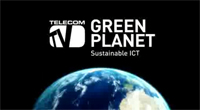I’ve been waiting for Apple’s iPad for about 10 years, ever since the first real “tablet” PC prototypes began to hit the market, and I’ve been logging some serious time on it since it came out — enough to say that if AT&T retains its newly announced tiered data plan structure, I’ll be in the top 2% that will take advantage of the unlimited plan.
But there are still a few ingredients missing from the media’s recipe for the iPad.
Yes, I’m impressed with the iPad. Great book readers. Perfect for email and social media sites, not to mention web surfing and tons of cool apps (even though many of them are still suffering from Rev 1.0 Crashing Syndrome). And I’m sure I’ll be equally impressed with many of the coming Droid-based dPad’s and the Microsoft-based mPads that I’ll also buy, analyze and try to break.
But what I really like about the iPad is the device’s “concept” – it’s not a “touch-screen PC” or laptop replacement and is clearly not a true “content creation” device, as evidenced by the fact that writing this piece on my 64Gig 3G unit — without an external keypad — is like watching my 2 yr old try to unlock my cell phone (slightly amusing at first, but ultimately annoying when he figures it out and starts deleting emails).
Rather it’s a new breed of device with a form, fit and function radically different from its bigger brother (the Mac) and its smaller siblings (the iPhone/iTouch/iPod, etc.). While the iPad is not bad for email, taking notes, social media sites, etc., this device is more dominantly a “content delivery and consumption” device.
With this in mind, I expected the iPad to be a phenomenal tool for getting news/ analysis online. But after visiting about 40+ different “media” sites, I realized that:
- Most “news/analysis” sites have not yet figured out the iPad’s real function or how to present information in this new X by Y format, not to mention the internal inconsistencies that abound (such as sites that routinely mix Flash and non-Flash video on a page by page basis, or those that offer different page layouts based either by author or subject matter — a major turn-off).
- The iPad highlighted differences between “blogs”, “analytic” and “journalistic” sites (Mashable, btw, still comes across as a blog, CNN as more of a newsy site, the WSJ as a clear journalistic site and the NYTimes as a hybrid split personality “not quite sure” site), and
- Nobody has yet figured out how to appropriately use different media formats to best convey their news/information on the iPad (a great example being a five-page, text-only news story that I read — I don’t remember what the story was about but I do remember it made me feel like I was sitting on a runway tarmac for five hours without bottle of water).
Clearly there are issues with the iPad – and everyone seems quick to highlight them. But these issues are technical in nature and they will be solved (for example, fixed-size images work great on a laptop, but “tappable” thumbnails that expand are ideal for an iPad device).
Without doubt, a new type of “content creation model” or “content creator” is required to match the capabilities of new interactive, highly-mobile, media rich pad-type delivery devices.
But the most significant theme that kept coming to mind as I cruised from site to site involved the shortcomings of the individuals who were actually producing the online content — the editors and writers themselves! It wasn’t that their content was bad, but that more often than not their “content creation” approach just didn’t match up to the UI (user interface), screen size and “application-oriented” potential of the iPad.
Having spent much of my career working with businesses that involved cutting edge technologies or thought methodologies, I really appreciate that the iPad allows for an amazing interweaving and mixture of different media contents: text, graphics, video, audio, etc. in ways that you just can’t achieve on a typical laptop/PC (or mobile phone). The possibilities for innovation are endless. And that could cause a major discontinuity as technology innovators and news/analysis publications continue to rapidly change the ground rules for content delivery but leave the content creators out of the process! What makes it even worse is the current cost-cutting trend of making journalists and analysts responsible for the entire writing, graphical, editorial, and publishing process.
Without doubt, a new type of “content creation model” or “content creator” is required to match the capabilities of new interactive, highly-mobile, media-rich pad-type delivery devices. Look at it this way, you would not use the same content style to write a newspaper article that you would to cover the same story from a TV news anchor desk. Two very different mediums that require two very different approaches.
Technology shouldn’t be driving how writers write, or how content is delivered, it should be the other way around.
Similarly, the iPad opens up enough possibilities that the writing style that works for a traditional web site just isn’t going to cut it for iPad-optimized sites or apps since the shift from laptop/PC-oriented websites to iPad apps is as profound as was the shift from traditional print media to laptop/PC sites.
I saw this same issue in 1997 when I started my own news/analysis firm. Our concept was to produce incredibly rapid analysis of breaking news events that would be delivered exclusively online in a user-configurable/on-the-fly format. This forced us to think in terms of concise bullet-point actionable content that was database driven and flexible in its purpose. It also forced us to seek out and/or educate a different type of analyst from the traditional advisory-based analysts. Traditional analysts were thinking “PDF-based reports” while we were thinking “flexible content”. They emailed fixed documents to their customers while we let our website/ database create the right content for each type of user.
There was no “right or wrong” issue here, just different approaches. But the point was clear: a shift to a new content creation or delivery model required a shift to a different type of thought process as well, and the iPad clearly represents a major shift in content delivery possibilities. Unfortunately, many existing journalists, analysts, etc. have been (or soon will be) placed in a situation where their traditional “content creation” skills need to rapidly evolve and adapt if they want their content to have meaning and “high consumer satisfaction” on iPads and similar devices.
So how do we fix this problem, given that we can’t just wait until all the current journalists and analysts retire (a really bad idea, btw)? Here are a few thoughts:
First, content “producers” must be intimately familiar with the different content distribution mechanisms. If your firm delivers content in 10 different formats or on 10 different types of devices, give all 10 devices to every author, journalist or analyst.
Second, websites need to adopt universal “site-wide” guides regarding the look and feel of information as it is presented on different devices. There is no AP Style Guide for an iPad, so write your own and let it evolve as you get more comfortable with both the device and the content creation/delivery process.
Third, as different information presentation formats are developed (and they will quickly as I expect many news/analysis sites to adopt an “app” approach in place of a website approach), content creators will have to start thinking about writing their core content in ways that allow it to be easily re-purposed or distributed in different formats (including not just different devices but different media, including text, pod-cast, video, etc.).
Lastly, while there are some really great thought leaders out there educating and developing a whole new wave of web-smart journalists and analysts, we have got to get the existing group of writers and editors out there proactively involved in the technological process. Technology shouldn’t be driving how writers write, or how content is delivered, it should be the other way around. I know some very smart journalists and analysts who could really take content creation and delivery into some very interesting areas, if only they had the chance.
– Author’s Note: This piece was originally prepared for the WeMedia Tabula Rasa event held in Washington, DC. For more information, check it out here: http://wemedia.com/2010/06/14/wethink-tabula-rasa-dc-preview-thoughts/












 Barry Diller has made billions off of the Internet. So when he said that all Internet content of value would be “paid” content within five years I thought I would agree. But I just can’t buy his idea of micro-payments for all types of valuable content (content = information).
Barry Diller has made billions off of the Internet. So when he said that all Internet content of value would be “paid” content within five years I thought I would agree. But I just can’t buy his idea of micro-payments for all types of valuable content (content = information). 



 Nokia wants to plant a tree for every cell phone you recycle. No, I’m not kidding. They’ll even map the tree on Google Earth so you can, well, watch it, I suppose.
Nokia wants to plant a tree for every cell phone you recycle. No, I’m not kidding. They’ll even map the tree on Google Earth so you can, well, watch it, I suppose.

 Sometimes it’s about winning, and sometimes it’s just about learning how to play the game.
Sometimes it’s about winning, and sometimes it’s just about learning how to play the game.